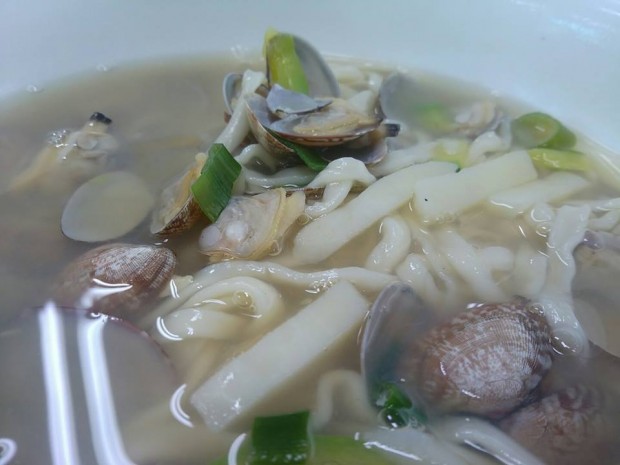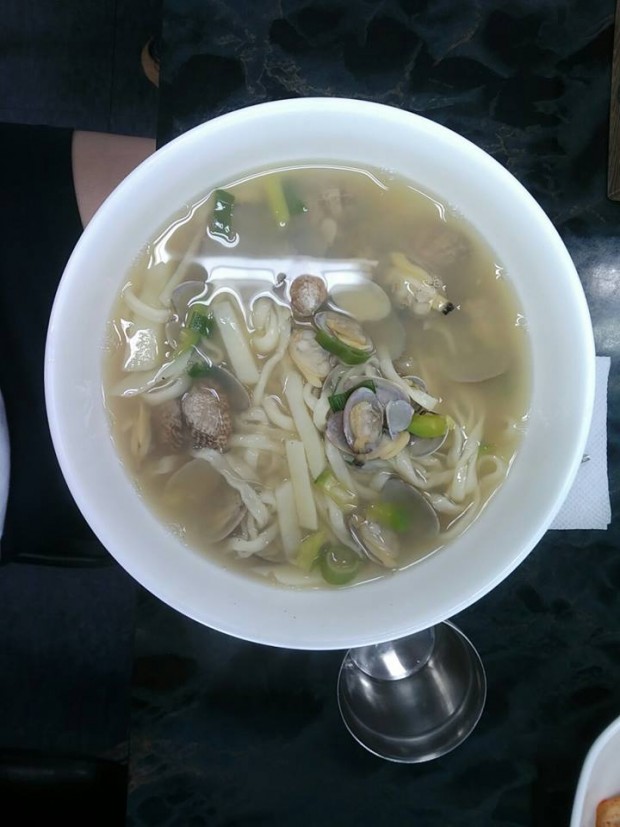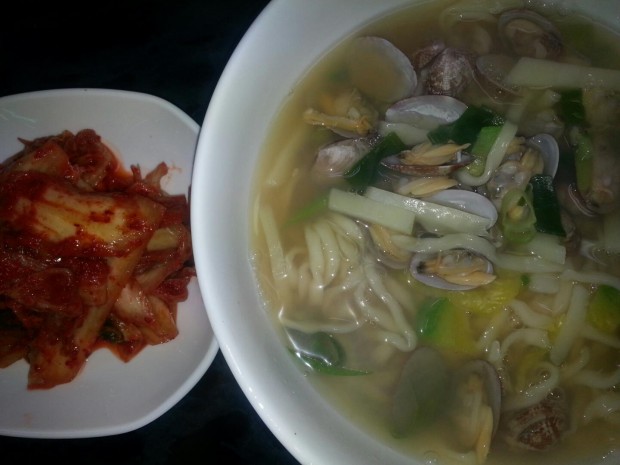Kalguksu: ancient and delicious knife noodles
Noodles have invaded the world, and every noodle lover knows they originated from Asia, whether was it some instant noodles with various flavors or expensive gourmet noodles. South Korea is no stranger to the different variation of noodles, as I’ve been to large number of noodle restaurants, tasting all kinds of noodles, cold and hot noodles, sweet and spicy, meat, chicken or seafood, you can name whatever comes to mind and you’ll find it here in Korea.
This time I’ve had the opportunity to try “Kalguksu/ 칼국수” or as it’s literally translated, “knife noodles”. Why call it knife noodles? Its name comes from the fact that the noodles are not extruded or spun, but cut. Those handmade knife-cut wheat flour noodles served in a large bowl with broth and other ingredients. It is traditionally considered a seasonal food, consumed most often in summer, but its guaranteed to be enjoyed anytime you eat it.
The record of noodles can be found in documents of the Goryeo era, but the descriptions are vague and the nature of the noodles isn’t clear. In some early documents it is mentioned that noodles were only eaten on special occasions, as wheat flour was very expensive, being imported from China. The recipe calls for the noodles to be boiled and rinsed in cold water before adding broth and garnish, a method that differs from the modern version of boiling the noodles together with the broth.
The broth for kalguksu is usually made with dried anchovies, shellfish, and kelp. Sometimes chicken broth would be used. In order to obtain a rich flavor, the ingredients are simmered for many hours. The noodles and various vegetables, most often zucchini, potatoes, and scallions are added and boiled together.
Eating Kalguksu with the taste of potatoes and shellfish intensified in the broth was a wonderful experience, with the side dish being usual Korean favorite, Kimchi. It was a typical Korean meal.




























































